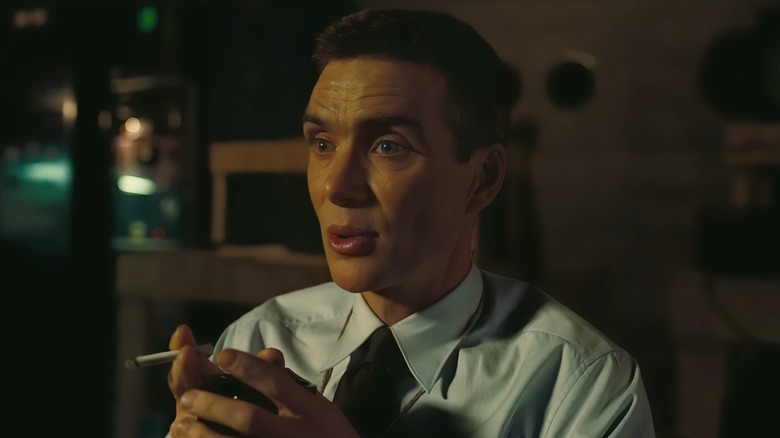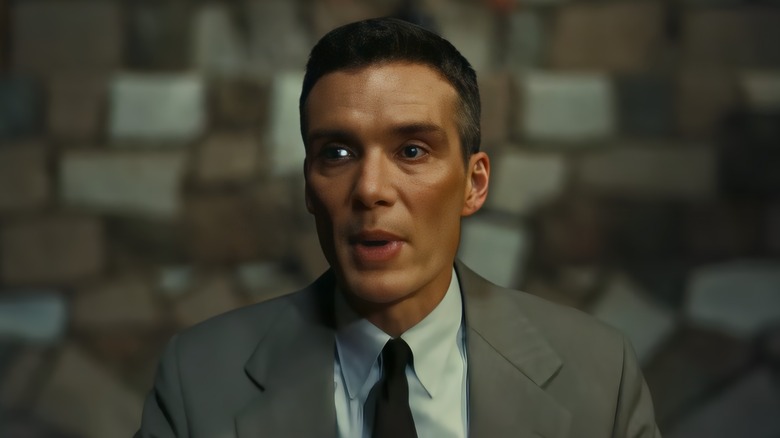Does Oppenheimer's Controversial Depiction Of Nuclear Carnage Pay Off?
Contains spoilers for "Oppenheimer."
"It's not a documentary," said Christopher Nolan of his new historical drama "Oppenheimer." The celebrated British writer-director was speaking to a crowd in New York screening the film, which has since debuted to rave reviews from critics and audiences alike. But while the dark story of America's most deadly physicist seems to have captivated audiences around the world, one persistent question seems to remain: why doesn't the film show real damage done to the Japanese cities of Hiroshima and Nagasaki?
Assuming that this question arises not from morbid curiosity, but rather from a desire to ensure the total destruction caused by J. Robert Oppenheimer's actions isn't lost on an audience potentially numb to war, it's a somewhat understandable concern. At the aforementioned screening, Nolan answered such criticisms by stating that the entirety of the film's color narrative is told exclusively from the title character's (Cillian Murphy) subjective point-of-view. As we see in the film, he — like the rest of America — merely hears about the destruction on his radio, without so much as a courtesy call from Leslie Groves (Matt Damon) or anyone else in the U.S. government confirming they were about to use his inventions to end over 200,000 innocent lives.
This isn't to say that "Oppenheimer" is entirely devoid of nuclear violence. One scene, in particular, sees Murphy's troubled Prometheus experiencing vivid, intrusive visions of those at Los Alamos, New Mexico suffering from the so-called "gadget." Whether or not the scene works, however, will differ from viewer to viewer.
Does the Los Alamos speech erase the bomb's real victims?
As Oppenheimer delivers an eerie victory speech following the bombs' use, he imagines the Americans he's been living amongst for the past two years as his victims. Christopher Nolan's own daughter even plays a young girl whose face appears to be peeling off due to radiation.
There are two main and potentially controversial ways to read this scene. The first is that the audience members become surrogate victims for the innocent lives of Hiroshima and Nagasaki, manifesting as his immediate guilt overwhelms him despite his words. Charitably, this read may be intended to make the horrific aftermath hit closer to home for the white, western audiences that may be predisposed to distance themselves from the act as a wartime necessity from a historical event long since passed. However, if white audience members need to see white victims in order to empathize with them, that's a sure and disturbing sign of the very distance "Oppenheimer" seeks to close.
A more plausible interpretation is that Oppenheimer is envisioning his future victims, cheering him on for giving them the power to destroy themselves. A clear message of the film is that the invention of nuclear warfare was a pandora's box Oppenheimer could (and should) have helped keep closed. He tries to put the proverbial genie back in the bottle after World War II, but the men he entrusted with these weapons only seem keen on making more. The consequences of his actions, in his mind, will likely lead to worldwide nuclear annihilation, as shown in the ending of "Oppenheimer." Thus, Oppenheimer perceives those in Los Alamos as potential casualties, anticipating that they too may one day fall victim to the destructive power he helped unleash.

